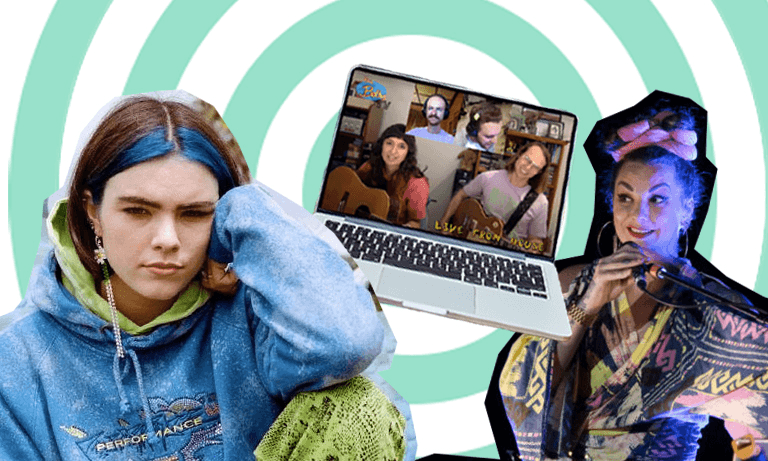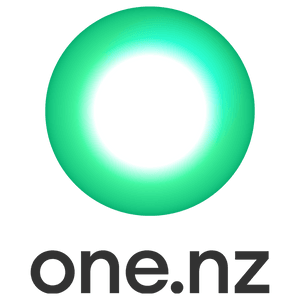Over lockdown, people who worked live gigs had their careers shut down. Thanks to technology, the connection between music makers and audiences grew and now, they’re more in sync than ever.
In the final days of level two, Auckland venue The Tuning Fork tested the waters of post-Covid connection. Soul singer Hollie Smith was performing one of the first live shows in the country since lockdown, and the 80 audience members allowed in to see her arrived a full hour before she took the stage, happy just to sit at a table that wasn’t in their own house.
It was the first in a series of small weekly, socially distanced events presented by Live Nation and Vodafone to celebrate the return of live music. Each of the 80 guests had their temperature checked, signed in, received service at their assigned table, and maintained social distancing.
Venues around the country were close to shutting their doors permanently over lockdown; many still are. Coming out of lockdown, early gigs like Smith’s were lifesaving. Beyond the musicians and the promoters there’s the hidden group who’ve built their careers around the highly technical, passion-driven work of concert sound, lighting and instrument set-up. The return of live music provided essential income, community and hope.
Some of that group spent lockdown at Spark Arena, filling old Tool storage containers with emergency welfare packages to send out to thousands of Aucklanders in need. Some needed those packages themselves. Others were able to tide over those weeks by lending a hand to live-streaming gigs: Dunedin’s Jam on Toast festival, Vodafone’s Lounge Jams, and Melted Ice Cream’s giant cyber line-up.
Doors are beginning to open but borders remain closed, meaning both this winter’s pub gigs and this summer’s music festivals will have local headliners. To keep our music industry from shrivelling under overheads, massive faith is being placed in local audiences to buy tickets. With international acts on hiatus for a potentially long period of time, it’s a crucial chance for local audiences to invest in the local music scene.
The rush
As level one approached, our response to community events became the same as our response to Covid-19: we went hard, and we went early. Within a day, a Breaking Beats drum and bass show in Wellington had sold out its 1,400 tickets, and moved venues to accommodate more. Six Mozart concerts put on by Orchestra Wellington not only sold out, but had hundreds of people waitlisted.
The week we entered level one, Whammy Bar in Auckland kicked things off with a free show on the Thursday, a Black Lives Matter fundraiser on the Friday, and finished the week off with a dance party. All three events were packed out. Tom Anderson, owner of Whammy Bar and an experienced tour and stage manager, said how New Zealanders react to the coming year of music will have a long-term impact on the New Zealand music industry.
“As we come into summer with the bigger shows and festivals that are going to have, depending on the bubble borders, predominantly New Zealand and potentially Australian acts, it’ll be interesting to see what numbers come out to those,” he said. “It’ll be really positive for New Zealand acts.”
Now is a unique moment for New Zealanders to give local music a chance, and the respect they’ve worked so hard to earn, Anderson said. That needs to be a sustained commitment, which could change the way local artists are perceived.
“You can’t expect someone to be a big act if you don’t give them the chance to be a big act. When the internationals come back, I’m hoping New Zealanders stay in that position.”
Mark Kneebone, co-head of promotions at Live Nation, agreed that border closures presented a unique challenge, but also an opportunity. Suddenly, local musicians are the headline acts on the live music schedule for the foreseeable future.
“Not being able to tour international talent has flipped the industry on its head,” he said.
“Luckily, we have a very strong local scene with some incredible talent who are willing to play. The opportunities that now exist for local musicians are enormous.”
The Beths will play to a sold out Powerstation on July 11; Benee’s nationwide tour in October has already had extra dates added in Auckland, Wellington and Christchurch owing to massive demand; and Tauranga supergroup L.A.B. have sold out Spark Arena. Pre-Covid-19, they likely wouldn’t have played there at all this winter.
The lifeline
Trapped in isolation over lockdown, audiences were denied that sense of connection and joy that comes from being in the presence of their favourite artists. Preserving a piece of that bond was the inspiration for Lounge Jams, a series of live-streamed shows launched by Vodafone and Live Nation, providing a digital connection to the local music scene.
The series saw artists like Tiki Taane, The Beths, P Digsss and Dave Dobbyn play to a Facebook audience via a livestream on Thursday nights at 7pm. The Dave Dobbyn session alone has clocked more than 276,000 views since the April 16 performance.
Technology was the great enabler during the pandemic. It allowed audiences to participate with artists in intimate ways that hadn’t been explored before Covid-19, and it provided an essential financial lifeline too.
“While we’ve had the capabilities for a number of years, audiences around the world have really embraced digital connections over the past few months,” said Carolyn Luey, consumer director at Vodafone. “We were excited to be able to connect some awesome New Zealand artists with a large nationwide audience, and use that connection to help the broader industry.”
The Lounge Jams were launched in support of Music Helps, an organisation that offers counselling and emergency funding to music industry workers in times of crisis. Its Music Helps Live campaign has raised over $550,000 for those in need due to the Covid-19 crisis.
That funding has helped hundreds of workers tide over the months until they got back to work; some are still waiting for that chance. Anderson said musicians are keen to play more – and get paid – and fans are excited to watch them do so. “As soon as things were hinting at level one, the email inbox was flooded.
“It’s a lot of work for the venues and promoters, but it’s a positive thing – it shows that people want to get out and play, and hopefully want to get out and see them.”
Lockdown was a chance for New Zealanders to take stock of what they missed from everyday life. The hashtag #RememberGigs began trending on social media, alongside footage of gigs past. Artists, too, yearned for the give and take of music with an audience, and turned to live streaming. In April, The Beths live-streamed a gig to over 10,000 people at 9am. Even now, the band say they’ll keep performing online for their fans not lucky enough to be living in Auckland.
The idea of using technology to connect with audiences isn’t new, it’s just evolved. In 2002 The Clean’s performance at the opening of Grainstore Gallery in Ōamaru was live-streamed on RNZ. Over lockdown, you could build a song with Rei on his Facebook Tutu Tuesdays live stream, attend a ticketed Nadia Reid concert held on Zoom, or watch an Instagram live session with indie artists like Merk and Daffodils. No matter where audiences are located, digital services can offer a virtual connection to the music world.
But while streaming is valuable, it can’t replace a live show, says Kneebone. “Live-streaming was a great reminder of the power of a live performance, but nothing beats the feeling of being the crowd,” he said. “That is irreplaceable.”
Live-streaming concerts post-lockdown is one way to keep workers employed and give the fans that real-world experience while continuing to build a digital community. “I think people have developed new skills [around live-streaming], so we’ll see more of it than we did before,” said Anderson. “I would like to see more live shows being streamed.”
While New Zealand is in level one, very few countries are in the same position to be throwing concerts. Streaming technology now means you can watch a different Radiohead concert “live” each week, or watch The Presets play an international concert from Sydney.
The connection
Ten days before New Zealand moved into level one, Hollie Smith sang to her Tuning Fork audience about a child she helped raise and about injustice in the US to a crowd that was keen to connect with both topics; to connect with her. When level one finally hit, streets and venues around the country came alive.
“As soon as something’s taken away from you, you realise how much you miss it, or how important it is to you,” said Anderson. His bar, Whammy, has been packed to the brim over the past two weeks.
Gigs are back, but more importantly people are back: at schools, at protests, at each other’s houses. When the summer festivals come around, New Zealanders will have the chance, and responsibility, to keep the local music industry flourishing, to keep local soundies and roadies employed, and to keep connecting with local headliners like Benee, L.A.B. and The Beths.
With the technology perfected over the Covid-19 crisis, these concerts could be streamed across the world, bringing those locked-down overseas into the audience. But here in level one New Zealand, we have the chance to celebrate our local talent in person. Absence made the heart grow fonder, but connection will make it stronger.

